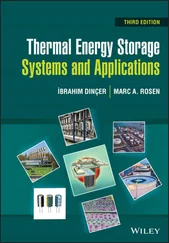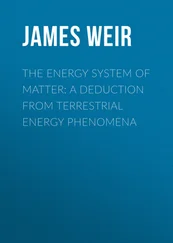1 Cover
2 Title Page
3 Copyright
4 List of Contributors
5 Preface
6 1 Thermal Energy Storage Systems for Concentrating Solar Power Plants 1.1 Introduction 1.2 Concentrating Solar Power (CSP) Technology 1.3 Thermal Energy Storage in CSP 1.4 Corrosion Problem in TES-CSP System 1.5 Conclusion References
7 2 Solar Thermal Power Plant with Thermal Energy Storage 2.1 Introduction 2.2 Literature Review 2.3 Energy Demand of World 2.4 Experimental Set Up 2.5 Experimental Data Analysis, Results and Discussions 2.6 Experimental Data Analysis, Results and Discussions 2.7 Conclusions Symbols Acknowledgement References
8 3 Efficient Energy Storage Systems for Wind Power Application 3.1 Introduction 3.2 Energy Storage Devices 3.3 Hybrid Energy Storage System (HESS) 3.4 Power Converter Topologies for Hybrid Energy Storage 3.5 HESS Energy Management and Control 3.6 Applications of the Storage Technologies in Wind Power 3.7 Conclusion References
9 4 Advances in Electrochemical Energy Storage Device: Supercapacitor 4.1 Introduction 4.2 Types of Energy Storage Devices 4.3 Overview of Supercapacitor and Its Global Scenario 4.4 Status of Supercapacitor in India 4.5 Types of Supercapacitor According to the Energy Storage Mechanism 4.6 Basic Components of Supercapacitor 4.7 Conclusion References
10 5 Thermal Energy Storage Systems for Cooling and Heating Applications 5.1 Introduction 5.2 Classification of Storage Systems 5.3 Sensible Heat Storage 5.4 Latent Heat Storage 5.5 Thermochemical Heat Storage 5.6 Application of Thermal Energy Storage Systems 5.7 Design Problems 5.8 Conclusion References
11 6 Optimistic Technological Approaches for Sustainable Energy Storage Devices/Materials 6.1 Introduction 6.2 Advancements in Supercapacitor Technology 6.3 Advancements in Battery Technology 6.4 Conclusion and Outlook References
12 7 Electro-Chemical Battery Energy Storage Systems - A Comprehensive Overview 7.1 Introduction 7.2 Electro-Chemical Storage Devices 7.3 Design and Performance Parameters for Electro-Chemical Storage 7.4 Case Study From Industry 7.5 Best Practices in Battery Maintenance 7.6 End of Life Cycle of Batteries 7.7 India Energy Storage Mission 7.8 Conclusion References
13 8 Simulation of Charging and Discharging a Thermal Energy Storage System Involving Phase Change Material 8.1 Introduction 8.2 Design of Latent Heat Storage (LHS) System 8.3 Analysis of Phase Change Systems 8.4 Simulation 8.5 Results and Discussion 8.6 Conclusion Acknowledgement Abbreviation References
14 Index
15 End User License Agreement
1 Chapter 1 Figure 1.1 Number of CSP projects in various countries. Figure 1.2 Current status of worldwide CSP plants. Figure 1.3 CSP receiver concepts. Figure 1.4 CSP receiver concepts as used worldwide. Figure 1.5 Integration of thermal energy storage systems to a CSP plant. Figure 1.6 Reported integration of thermal energy storage systems in worldwide C... Figure 1.7 Active two-tank direct thermal energy storage. Figure 1.8 Active single tank thermocline thermal energy storage. Figure 1.9 Active two-tank indirect thermal energy storage. Figure 1.10 Passive thermal energy storage.
2 Chapter 2 Figure 2.1 Classification of primary energy sources. Figure 2.2 Secondary energy sources. Figure 2.3 Classification of solar energy. Figure 2.4 Classification of CSP systems. Figure 2.5 Parabolic trough collector. Figure 2.6 Linear fresnel reflector. Figure 2.7 Solar tower. Figure 2.8 PDC system. Figure 2.9 Energy storage systems.Figure 2.10 Parabolic solar reflector.Figure 2.11 Flexible parabola.Figure 2.12 Various actuators.Figure 2.13 (a) Plan of receiver coil drawing (b) Elevation of receiver coil blo...Figure 2.14 Size and photo mixed alkali halide compounds doped with metallic imp...Figure 2.15 Cast-iron core crucible design.Figure 2.16 Schematic of experimental set up.Figure 2.17 Installation of the solar thermal storage and solar tracker unit.Figure 2.18 Solar thermal storage with solar tracker unit.Figure 2.19 Tracking motor.Figure 2.20 Tracking rope & chain.Figure 2.21 Changes in aperture area of reflector.Figure 2.22 Results for the temperature distribution in the storage under specif...Figure 2.23 Heat loss and radiation for different receivers in a module.Figure 2.24 Receiver charging-discharging.Figure 2.25 Receiver with grooving.Figure 2.26 PID logic implemented in the control logic.Figure 2.27 Operation parameters and results.Figure 2.28 Ave. DNI of the location for 2016.Figure 2.29 Thermal behavior of the receiver without front glass.Figure 2.30 Thermal behavior of the cover at receiver opening front glass.Figure 2.31 Thermal behavior of the Receiver with front glass covering at the re...Figure 2.32 Filling of salt at core of receiver.Figure 2.33 Focus of lens at tip of receiver.Figure 2.34 Temperature (max.) recorded during field test.Figure 2.35 Salt heating and cooling cycle during lab test.
3 Chapter 3Figure 3.1 Global Wind Installation in GW...Figure 3.2 Services provided by ESD...Figure 3.3 Role of storage technologies in wind power...Figure 3.4 Energy storage technology...Figure 3.5 Superconducting magnet energy storage...Figure 3.6 Supercapacitor...Figure 3.7 Flywheel energy storage...Figure 3.8 Pumped hydroelectric storage...Figure 3.9 Compressed air energy storage...Figure 3.10 Fuel cell...Figure 3.11 Maturity level of storage technology...Figure 3.12 Hybrid configuration...Figure 3.13 Different HESS topologies. (a) passive (b) semi-active (c) series ac...Figure 3.14 Comparison of different topology.Figure 3.15 Energy management classification of HESS.Figure 3.16 Filter-based control scheme for HESS.Figure 3.17 MPC control scheme for HESS.
4 Chapter 4Figure 4.1 Different types of electrical energy storage systems.Figure 4.2 Schematic representation of supercapacitor.Figure 4.3 Schematic representation of various designs of supercapacitor devices...Figure 4.4 The TechSci research provided a clear database of India’s supercapaci...Figure 4.5 Diagram of different types of supercapacitor.Figure 4.6 Schematic representation of (a) Helmholtz model, (b) Gouy-Chapman mod...Figure 4.7 Equivalent circuit diagram of EDLC supercapacitor.Figure 4.8 Equivalent circuit diagram of pseudocapacitor.Figure 4.9 Schematic representation of different types of EDLC electrode materia...Figure 4.10 (a) Overlap CV plot of rGO/CQDs-HP at different scan rates (b) overl...Figure 4.11 Schematic representation of different types of pseudocapacitive elec...Figure 4.12 (a) DFT optimized structure of VO 2(D), (c) overlap CV plot, (d) overlap CD plot of...Figure 4.13 (a) TEM image of rGO/MoS 2-S, (b) overlap CV plot and (c) operational stability...
5 Chapter 5Figure 5.1 Classification of different TES systems.Figure 5.2 Schematic of a typical water tank storage system.Figure 5.3 Different degree of stratification with same amount of stored heat wi...Figure 5.4 Schematic of a solar air heating system integrated with packed bed th...Figure 5.5 Schematic of a typical ATES system.Figure 5.6 Encapsulated PCM...Figure 5.7 Classification of sorption thermal storage system.Figure 5.8 Schematic of absorption cycle (a) charging, (b) discharging.Figure 5.9 Schematic of a closed adsorption cycle (a) charging, (b) discharging.Figure 5.10 Working of a conventional VAR system with LiBr/H 2O as working fluid.Figure 5.11 Integration of ATES system with solar pump for space heating/cooling...Figure 5.12 Integration of solar pond with packed bed THS system for space heati...Figure 5.13 Solar FPC with LTES.Figure 5.14 The components of Solar PV/T (water-based)...Figure 5.15 Classification of PV/T collectors...
6 Chapter 6Figure 6.1 (a) Ragone plot of various electrochemical storing and conversion dev...Figure 6.2 Factors affecting performance of supercapacitors.Figure 6.3 (a) Evolution of global supercapacitor market (b) the predicted super...Figure 6.4 Two types of supercapacitor assembly representation: cylindrical and ...Figure 6.5 Classification of batteries.Figure 6.6 Internal view and construction of lead-storage cell.Figure 6.7 (a) inner construction of sodium-sulphur battery (b) Schematic illust...Figure 6.8 (a) Battery whole life cycle: design, production, EV application and ...Figure 6.9 The expected annual lithium ion battery demand from 2015 to 2030.
Читать дальше












